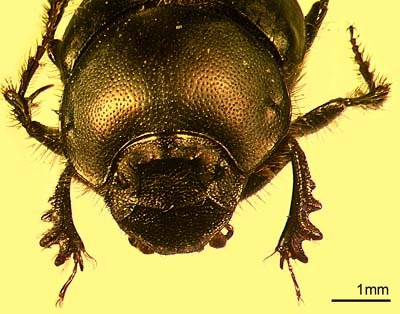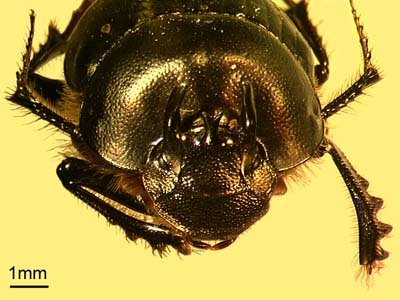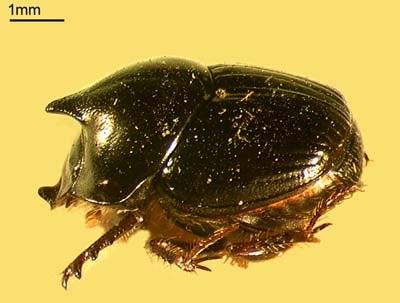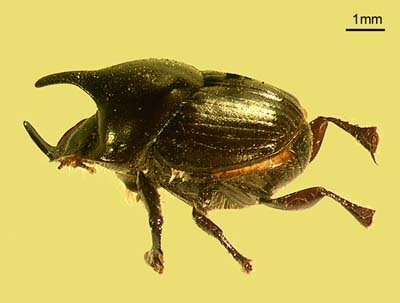![]()
![]()
![]()
Major and minor males
In many genera the degree of head and pronotal armament varies within a species. There is a gradation from large, strongly armoured males (major males), to smaller males that lack or have only poorly developed horns (minor males), and females, which are often unadorned. For example, in the photos below, the minor male of O. fuliginosus lacks horns altogether, while the major male has quite distinctive horns. The minor male of O. dunningi has horns and a clypeal process, but they are less developed than in the major male. The degree of armament is determined by the size of the beetle, which is primarily determined by the feeding success of the beetle at the larval stage.
The head armament of male dung beetles is important in pre-mating combat with males of the same species (Eberhard 1980, 1982). Males with larger horns are more successful at prying up or lifting an opponent in competition for resources or females. To compensate for their smaller size and less developed horns, minor males have developed non-aggressive behavioural characteristics such as emerging earlier and dispersing further than major males. This means they are less likely to have to encounter, and therefore compete, with major males (Cook, 1987).
The key provided here is based on major males. Identification of minor males may be difficult.

Minor male of O. fuliginosus Major male of O. fuliginosus

Minor male of O. dunningi Major male of O. dunningi


